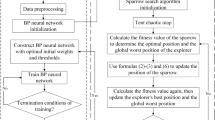Abstract
Aiming at the dynamic uncertainty and prediction accuracy of security situation prediction in complex cloud network environment, a prediction model of cloud security situation based on evolutionary functional network is proposed. Firstly, the evolutionary functional network model is constructed by combining the evolutionary algorithm with the functional network, which solves the problem of basis function selection and basis function coefficient correction of the prediction model. Secondly, the stochastic approximation algorithm is used to process and comprehend the cloud security situation elements, and the computational complexity of the prediction model is reduced by the dimensionality reduction method. Finally, by constructing the credibility matrix of the uncertain influence relationship of security situation elements, we use the multivariate non-linear regression algorithm to predict the cloud security situation. The simulation results show that compared with BP model and RAN-RBF model, the prediction accuracy of the proposed model is improved by 8.2% and 6.9% respectively, and the convergence efficiency is improved by 12.3% and 10.8% respectively.













Similar content being viewed by others
References
Gong J, Zang XD, Su Q, Hu XY, Xu J (2017) Survey of network security situation awareness. Journal of Software 28(04):1010–1026
Zhao DM, Li H (2017) Approach to network security situational element extraction based on parallel reduction. Journal of Computer Applications 37(04):1008–1013
Wenjun Y, Jiaying Z, Chundong W, Xiuliang M (2019) Situation prediction of large-scale internet of things. EURASIP J Inf Secur 13:2–9
Gan WD, Zhou C, Song B (2016) Network security prediction model based on RAN-RBF neural network. Comput Therm Sci 43(S2):388–392
Yang HP, Qiu H, Wang K (2017) Network security situation evaluation method for multi-step attack. J Commun 38(01):187–198
Zhang RC, Zhang YC, Liu J, Fan YD (2019) Network security situation prediction method using improved convolution neural network. Computer Engineering and Applications 55(06):86–93
Tang YL, Li WJ, Yu JX, Yan XX (2015) Network security situational assessment method based on improved D-S evidence theory. Journal of Nanjing University of Science and Technology 39(04):405–411
Wang YC, Li WJ, Liu Y (2014) A forecast method for network security situation based on fuzzy Markov chain. Lecture Notes in Electrical Engineering 260:953–962
Liu YL, Feng DG, Lian YF, Chen K, Wu D (2014) Network security situation prediction method based on Spatio-temporal dimension analysis. Journal of Computer Research and Development 51(8):1681–1694
Rapuzzi R, Repetto M (2018) Building situational awareness for network threats in fog/edge computing: emerging paradigms beyond the security perimeter model. Futur Gener Comput Syst 85:235–249
Mozzaquatro B A, Jardim-Goncalves R, Agostinho C (2017) Situation Awareness in the Internet of Things. In: 2017 International conference on engineering, technology and innovation (ICE/ITMC). IEEE, Funchal, pp. 182–990
Zhou YQ, Zhao B (2010) Progress of functional networks and their applications. Journal of University of Electronic Science and Technology of China 39(06):803–809
Xia HM, Guo DL (2013) Theory and Learnig algorithm of multidimensional function approximation based on evolutionary functional networks. Mathematics in Practice and Theory 43(11):231–238
Chen WP, Ao ZG, Guo JYQ, Tong J (2018) Research on cyberspace situation awareness security assessment based on improved BP neural network. Comput Therm Sci 45(S2):335–337 +341
Talwalkar A, Kumar S, Mohri M et al (2013) Large-scale SVD and manifold learning. Journal of Machine LearningResearch Journal of Machine Learning Research 14:3129–3152
Gaun T, Li YL (2016) Stochastic approximation approaches of large-scale matrix dimension reduction. Mathematics in Practice and Theory 46(24):184–193
Halko N, Martinsson PG, Tropp JA (2011) Finding structure with Stochasticness: probabilistic algorithms for constructing approximate matrix decompositions. SIAM Rev 53(2):217–288
Xuan L, Lu XC, Yu RH, Zhao XM (2008) Self-similarity analysis of network threat time series. J Commun 04:45–50
He DX, Li YF, Liu XH, Zhou YQ (2008) Non-linear regression forecast model based on functional networks and learning algorithm. Computer Engineering and Applications 24:74–77
National Information Security Vulnerability Database. http://www.cnnvd.org.cn/ (Accessed 09 October 2018)
Acknowledgements
This present research work was supported by the National Natural Science Foundation of China (61202458, 61403109), the Natural Science Foundation of Heilongjiang Province of China (F2017021) and the Harbin Science and Technology Innovation Research Funds (2016RAQXJ036).
Author information
Authors and Affiliations
Corresponding author
Additional information
Publisher’s note
Springer Nature remains neutral with regard to jurisdictional claims in published maps and institutional affiliations.
Rights and permissions
About this article
Cite this article
Xie, B., Zhao, G., Chao, M. et al. A prediction model of cloud security situation based on evolutionary functional network. Peer-to-Peer Netw. Appl. 13, 1312–1326 (2020). https://doi.org/10.1007/s12083-020-00875-9
Received:
Accepted:
Published:
Issue Date:
DOI: https://doi.org/10.1007/s12083-020-00875-9




